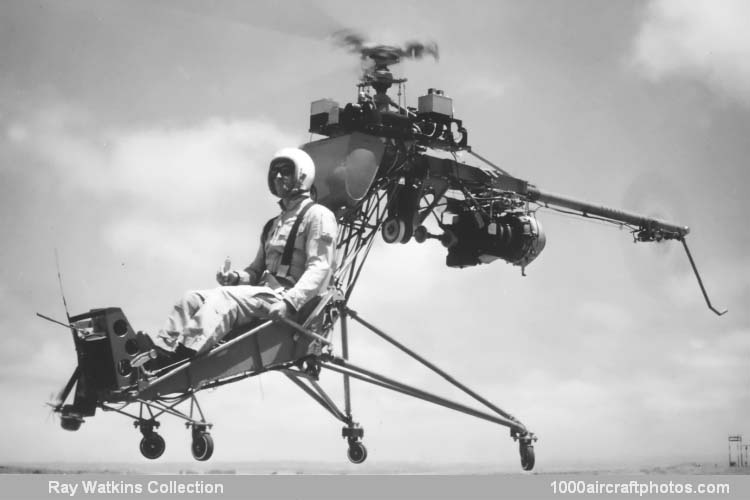09/30/2009. Remarks by Johan Visschedijk: "Bruce Del Mar formed Del Mar Engineering Laboratories at Los Angeles, California, USA, in 1940. The company was engaged primarily on the design and production of weapons support and training systems for the armed forces of the USA, Canada and other nations, till it ceased operations in 1974.
Del Mar produced a series of very original experimental ultralight piloted or drone helicopters (with the basic dynamic components common to all versions), as well as a helicopter training system.
From 1960 the DH-1 and DH-2 Whirlymite family became available in a variety of configurations as follows (although it is not clear how many were actually flown):
DH-1A Whirlymite Scout.
Basic single-seat version with 56 hp Kiekhaefer Mercury 800 piston engine, that could be transported on a light vehicle or small boat. Prototype first flew on June 15, 1960, registered as N3349G (c/n 1) and was evaluated by US and foreign military and civil aviation authorities. The design was revised extensively during 1962-1963, to make it suitable for production, and a new production prototype was completed.
DH-1B Whirlymite Tactical Drone.
Piloted automatically by radio command from the ground, or through a programmer mounted on the helicopter. For delivery of special weapons where pinpoint accuracy and search capability were essential.
DH-1C Whirlymite Target Drone.
Minimum size low-cost destructible target for use in development of anti-helicopter missiles and training of personnel in their use.
DH-1D Whirlymite Packer.
Drone version for troop re-supply and casualty evacuation duties. Same basic airframe as DH-lA with seat, seat support structure and wheel landing gear replaced by rigid strut landing gear and attachments for payload. Fully-automatic flight programming for all-weather operation.
DH-1E Whirlymite Spotter.
Drone version similar to DH-1C, but with shorter landing gear struts and special equipment for battlefield target location and field combat evaluation. Designed to be programmed to patrol a pre-determined sector of combat area and transmit surveillance data by a variety of sensory systems, including television, infra-red and radar sensors.
DH-2A Whirlymite Scout.
Same as DH-1A, but powered by a small shaft-turbine engine (developed for use in aircraft APUs, Auxiliary Power Units). The first prototype DH-2A was the original DH-1A N3349G fitted with a 65 shp Solar T62-T-2, in which form the helicopter could lift a payload equal to its own empty weight: 300 lb (136 kg). Design started in December 1962 and the prototype first flew in May 1963. On following aircraft an 85 shp AiResearch GTP30-91 was tested, as pictured in the aircraft above.
DH-2B Whirlymite Tactical Drone,
DH-2C Whirlymite Target Drone,
DH-2D Whirlymite Packer,
DH-2E Whirlymite Spotter.
All similar to their DH-1 counterparts, except for the shaft-turbine engine."

